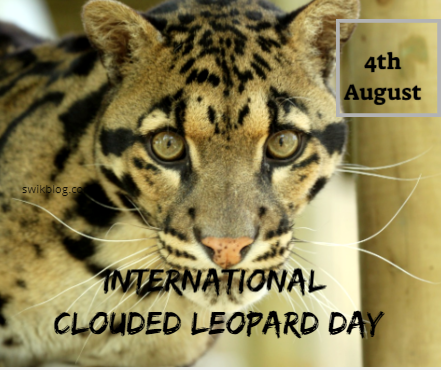International Clouded Leopard day is annual awareness day celebrated on every 4th of August for recognition and initiative to lift the status of clouded leopards both in captivity and in the wild. Most of the people have’nt heard about the clouded leopard and none of them have any idea about threats they are facing. Organizers for the International Clouded Leopard Day are Lauren Amos and Dan Kemp who deal with elusive and shy species on the daily basis they both are carnivore keepers from Howletts Wild Animal Park in London.
The goal of ICLD is to raise awareness and to unite the conservation thinking among all the zoological collections and for all those who have an interest in one of the world’s beautiful and iconic cats “the Clouded Leopard”.
About Clouded Leopards
The clouded leopard botanical name- (Neofelis nebulosa) is a wild cat of medium size from the foothills of the Himalayas across mainland Southeast Asia into southern China. It has been listed on the IUCN Red List since 2008 as Vulnerable. The overall number of the country is estimated of being below 10,000 mature persons with a declining demographic rate.
The clouded leopard, formally identified as a species in 1821, remains just as elusive today as it was almost 200 years ago. Much of what we know about these cats is that they are found in zoos.
Why these leopards are given name of clouded leopard?
The clouded leopard is named for a large, cloudy spot covering its body. These spots provide perfect camouflage in their forest habitat. Genetic research in recent years revealed that cloudy leopards are a separate cat and not just a leopard. These are closely related to the snow leopards and as tigers, lions, jaguars, and true leopard species in the same taxonomic subfamily, Pantherine.
Some facts about the clouded leopard
The clouded leopard has the longest canine teeth of any feline compared to its body size.
The key threats to cloudy leopards in the wild are deforestation, poaching on their teeth and skins.
Although of their elusive existence, the lifespan of clouded leopards in the wild is little known. They were, however, comfortable with their captivity for up to 17 years.
The clouded leopard in Malaysia is referred to as the tree tiger.
Cloudy leopards spend most of their time in trees, and they can contend with a semi-arboreal environment at times.
It is a small way to raise awareness about the conservation of clouded leopards and somehow, we can help these beautiful wild cats to give them conservation environment.
Swikriti Dandotia








